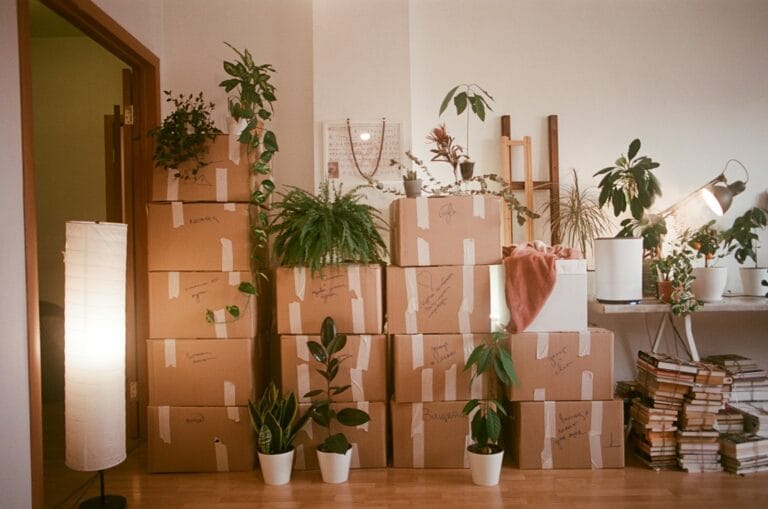Making your office more sustainable doesn’t have to be complicated or pricey. Even small changes—like cutting down on paper, swapping out lightbulbs, and setting up recycling—can shrink your workplace’s environmental impact and save some money.
You really can turn your office into a greener space just by making smarter energy choices and tweaking daily habits. Whether it’s encouraging better commuting options or just creating a healthier indoor vibe, these little steps start to add up.
The best sustainability ideas for offices are all about practical solutions you can try right away. If you’re looking to save energy, reduce waste, or clean up the air, there’s something here for every business—big or small.
Essential Sustainability Ideas for Your Office
Going green at work usually starts with three basics: using less paper by going digital, setting up good recycling stations, and picking eco-friendly office supplies. These steps not only help the environment but can also cut down your company’s costs.
Go Paperless and Embrace Digital-First Policies
Digital-first policies can slash your office paper use by half or more in just a year. Try moving to electronic invoicing, digital contracts, and cloud storage for your documents.
Switch out paper forms for online ones that staff can fill in on their computers or tablets. Use project management software instead of printed task lists or schedules. This makes sustainability in the workplace easier to keep track of.
Set up digital signature tools for contracts and approvals. Tools like DocuSign, Adobe Sign, and HelloSign can speed up your workflow and cut out paper waste.
Key Digital Switches:
- Email receipts instead of printing them
- Digital meeting agendas and notes
- Online employee handbooks
- Electronic timesheets and expense reports
If you really need to print, use both sides of recycled paper and set printers to double-sided by default. This one tweak can make a big difference right away.
Offer short workshops so employees can get comfortable with new digital tools. Some folks just need a little help to get started.
Implement Recycling Stations and Bins
Recycling stations make it easy for everyone to sort waste the right way. Place clearly labeled bins where people actually go—like break rooms, copy areas, and by the printers.
Have separate bins for paper, plastic, glass, and electronics. Add picture labels so no one’s left guessing. These visuals help avoid mistakes that can mess up the whole recycling batch.
Effective Recycling Station Setup:
- Paper bin: White paper, newspapers, magazines
- Mixed recycling: Plastic bottles, cans, glass containers
- E-waste box: Batteries, old phones, printer cartridges
- Compost bin: Food scraps from break room
Keep recycling bins close to regular trash cans. People are way more likely to recycle if it’s easy. Creating recycling stations can really cut down on what your office sends to the landfill.
Arrange for electronics recycling too. Old computers, phones, and printer cartridges have materials worth recovering. Many office supply stores will take these off your hands.
Check your recycling rates each month and post the results where everyone can see. A little friendly competition never hurts.
Adopt Eco-Friendly Office Supplies and Recycled Materials
Switch to office supplies made from recycled or renewable materials. These days, most cost about the same as the regular stuff but are a lot better for the planet.
Pick paper with at least 30% post-consumer recycled content. Look for FSC-certified products so you know they’re from responsibly managed forests. These choices help sustainable office goals without making your workday harder.
Eco-Friendly Supply Swaps:
- Refillable pens instead of disposable ones
- Recycled paper and notebooks
- Plant-based cleaning products
- Reusable coffee cups and water bottles
- LED light bulbs
Find suppliers who offer bulk orders and use less packaging. That means less waste and usually lower prices per item. Some even offer carbon-neutral shipping now.
Trade single-use items for reusables. Give staff ceramic mugs, metal water bottles, and cloth napkins. They pay for themselves pretty quickly.
Look for office furniture made from recycled materials. Desks, chairs, and shelves made from recycled plastic or reclaimed wood are easy to find and often affordable.
Energy Efficiency Strategies in the Workplace
Upgrading lighting, using smart temperature controls, and getting everyone involved can cut your office’s energy use by up to 30%. That’s good for the environment and your bottom line.
Switch to LED Lights and Motion Sensors
LED lights use about 80% less energy than regular bulbs. They’re one of the simplest ways to improve energy efficiency, and they last a lot longer too.
You’ll barely have to replace them, which means less hassle and less waste.
Motion sensors make LEDs even better by turning off lights in empty rooms. Try installing them in:
- Conference rooms
- Bathrooms
- Storage areas
- Hallways
- Break rooms
You can save another 10-20% on energy by pairing LEDs with motion sensors. It’s a pretty straightforward way to shrink your carbon footprint.
The upfront cost usually pays off in a year or so, thanks to lower energy bills.
Optimize Energy Consumption with Smart Thermostats
Smart thermostats can trim heating and cooling costs by 15-23% compared to old-school systems. They learn when your office is busy and adjust temps automatically.
Program your thermostat to bump temperatures up by 7-10 degrees when the office is empty. It saves energy without making anyone uncomfortable during work hours.
Key features that maximize savings:
| Feature | Energy Savings |
|---|---|
| Scheduled programming | 10-15% |
| Occupancy sensors | 5-10% |
| Remote monitoring | 3-8% |
Set temps to 68°F in winter and 78°F in summer when people are around. Each degree makes a difference of about 6-8% in energy use.
Smart thermostats also give you reports so you can see your progress and spot new ways to implement energy-saving strategies.
Promote Energy-Saving Habits Among Staff
How people use equipment and space really affects your office’s total energy use. Engaging employees in sustainability initiatives can make a bigger difference than just swapping out gear.
Daily habits that help:
- Turn off computers and monitors at the end of each day
- Unplug chargers and small appliances when not in use
- Use natural light when possible
- Close blinds during hot afternoons to keep things cool
Try a “green workplace challenge” to get everyone involved. Track your savings as a team and celebrate when you hit a milestone.
Devices in standby mode—those phantom loads—can waste 5-10% of your office’s electricity. Teach staff how to spot and cut these hidden drains.
Put up reminder signs near switches and equipment. Sometimes a simple nudge is all it takes.
If you can, pick energy champions for each floor or department. These folks can answer questions and keep the momentum going.
Sustainable Commuting and Office Operations
Transportation is a big chunk of workplace carbon emissions, and daily operations add even more. Changing how people get to work and how you run things can really shrink your footprint.
Encourage Carpooling and Public Transportation
Set up a carpool matching system so employees can find rides with coworkers nearby. You can use an internal list or apps like Waze Carpool to make it easier.
Offer perks for using public transit, like subsidies or pre-tax commuter benefits. It makes buses and trains a better deal for your team.
Carpooling perks:
- Less need for parking spaces
- Cuts personal fuel costs by half or more
- Reduces traffic jams near your office
Work with local transit agencies for group discounts. Some cities give corporate rates if you’re buying passes in bulk.
A green team can help spread the word and organize carpools or share transit info.
Keep track of participation and emissions saved. Sharing the results can keep folks motivated.
Provide Bike Storage and Promote Walking
Install secure bike racks or storage so people feel safe leaving their bikes at work.
Showers and changing rooms encourage cycling, too. Most people are more likely to bike if they can freshen up before getting to their desk.
Walking and biking ideas:
- Hand out bike tune-up vouchers
- Offer walking meetings
- Start fitness challenges
- Map out safe cycling routes to your office
Sustainable commuting is good for the planet and your health. People who walk or bike often feel more energized and satisfied at work.
Think about bike-sharing for short business trips nearby. It’s a nice alternative to short car rides for meetings or errands.
Reduce Business Travel and Support Remote Work
Swap in-person meetings for video calls when you can. These days, remote collaboration tools are pretty solid for most business needs.
Set a policy that requires a good reason for flights under 500 miles. Short flights are especially rough on the environment.
Remote work perks:
- No commute at all
- Less need for office space
- Cuts travel costs
- Better work-life balance
Invest in decent video conferencing gear. Good cameras and mics make virtual meetings way less painful.
Make sure everyone knows how to use collaboration tools like Slack, Zoom, or project management apps.
Keep tabs on travel costs and carbon savings. Many companies are surprised by how much they save—both money and emissions—by traveling less.
Creating a Healthy and Eco-Friendly Workspace
A healthier workspace often starts with better air—think plants and safer cleaning products. Even small changes in your kitchen or waste habits can make the office more pleasant and sustainable.
Incorporate Indoor Plants for Air Quality
Indoor plants help filter out nasty chemicals and add oxygen. They can remove stuff like formaldehyde, benzene, and ammonia that come from furniture or cleaning sprays.
Good Plants for Offices:
- Snake plants (don’t need much light or water)
- Pothos (easy to care for, grows fast)
- Spider plants (purify air, safe for pets)
- Peace lilies (removes several toxins)
Aim for one medium plant per 100 square feet for the best results. Plus, plants can lower stress and boost productivity.
Pick plants that fit your office’s lighting. Low-light plants are great if you don’t have a lot of windows.
Adopt Green Cleaning Products and Nontoxic Cleaners
Most traditional cleaning products release chemicals that aren’t great for air quality or your health. Eco-friendly cleaning products can keep things clean without the side effects.
Safer Cleaning Alternatives:
- White vinegar for glass and surfaces
- Baking soda for scrubbing
- Castile soap for general cleaning
- Lemon juice for disinfecting
Look for products with Green Seal or EPA Safer Choice labels. These are better for people and the planet.
Show your cleaning staff how to mix concentrated green cleaners properly. It saves money and cuts down on packaging waste.
Enhance the Office Kitchen for Sustainability
The office kitchen is a great place to cut waste. Start by swapping out disposables for reusables.
Kitchen Sustainability Tips:
- Install a water filtration system instead of using bottled water
- Provide reusable plates, cups, and utensils
- Add recycling bins for different materials
- Use energy-efficient appliances
Replace the water cooler with a filtered water tap connected to your building’s water supply. No more plastic bottles or delivery costs.
Stock up on bulk coffee, tea, and snacks in reusable containers. It means less packaging and usually saves you a few bucks, too.
Promote Composting and Waste Reduction
Food waste is a huge chunk of what fills up office trash cans, and most of it just sits in landfills. Setting up a basic compost system can turn all those leftovers into something actually useful—good soil for plants—and it’s a small way to shrink your office’s environmental impact.
Try putting out separate bins for compostables like fruit peels, coffee grounds, and food scraps. If you’ve got some outdoor space, you could even start your own compost bin, but teaming up with a local composting service works too.
Compostable Office Items:
- Coffee filters and grounds
- Tea bags (double check they’re plastic-free)
- Fruit and veggie scraps
- Paper towels and napkins
Make sure everyone knows what belongs in the compost bin and what doesn’t. Labels and quick, clear instructions can really help keep things sorted right.
It’s worth checking in on your progress every month. A lot of offices notice their trash drops by about a third, sometimes even half, once they get composting going. Not bad, right?




